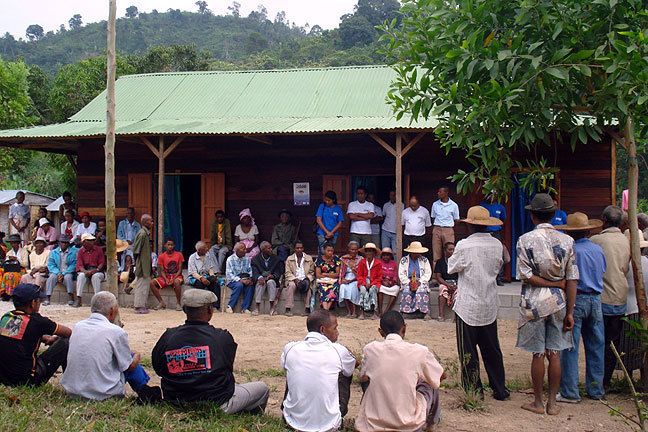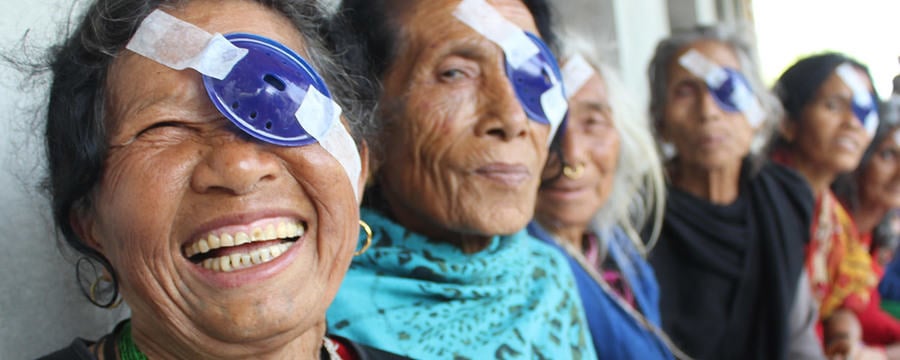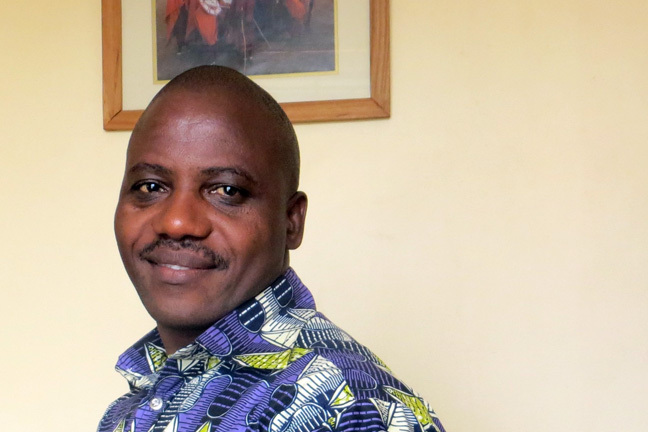The application of planning

Share this step
In this step we interview Edson Eliah, Deputy Director of the Kilimanjaro Centre for Community Opthalmology (KCCO) based in Tanzania. He has been involved in planning and supporting the development of several key projects in Africa, with interview questions focusing on developments in Madagascar.
Daksha: Hi Edson, could you introduce yourself please?
Edson: Hello everyone, my name is Edson Eliah. I work with the Kilimanjaro Centre for Community Ophthalmology in Tanzania, and for the past 10 years have been involved in planning for VISION 2020 programme in different countries in Africa.
Daksha: Great, thank you. You’ve been involved in planning and supporting the development of several key projects in Africa. Could you briefly share your experience from Madagascar, particularly on the role of establishing partnerships?
Edson: The importance of having a local partner is invaluable for us as we come in as an external support. Firstly, before undertaking any work we collected information for our catchment area (Atsinanana Region) where we were aiming to set up the programme. We began by collecting information at both the community level and at the hospital.
At the hospital level we established if there was willingness to offer services to the community in the larger population and what was there already in place in terms of infrastructure and in terms of the treatment that is provided.
At the community level it was essential to know, what are the common eye diseases/prevalence of eye disease? What are the people’s perceptions for instance of the diseases?
Daksha: What was the range of key stakeholders that you selected and why?
Edson: The other tip is to try and understand who are the other eye health providers in the area (potential partners). In every region there are some eye care providers. We need to know what they are doing, what is their interest, what are the resources available, which specific diseases are they trying to take on?
Identifying all stakeholders is essential. We established partnerships with eye care providers, the NGOs, and it is very important to also involve the community leaders.
So in our project in Madagascar, the network was there, a long established set up at the hospital, and also the involvement of an NGO called Lions Sight Madagascar. We also went to the community leaders to get their buy-in and support.
Daksha: And how did you proceed and what did you find in Madagascar?
Edson: Along with stakeholders we did a situational analysis: (we) explored the availability of human resources, infrastructure, did we have equipment in place, the present output level for eye care. Also we looked at the management and a data collection system. In Madagascar all of this was missing.
To move forward, one of the key objectives set by the stakeholders was to train and recruit a manager who could coordinate the programme. This freed up the clinical staff to focus on service delivery. An NGO was approached to secure appropriate equipment.
The strength with planning was the ownership taken by the stakeholders. Involve them in, setting a budget and agreeing on what needs to be done. To practically achieve this we brought together the partners for two days and agreed on what work to do. This ensured that all were working towards a common vision for the area.
This planning has to include hospital needs but also to address challenges at the community level, e.g access to eye care services.
If you don’t involve all stakeholders there are likely to be problems and the programme is likely, very likely, to fail, because people are not involved adequately.
Daksha: So to summarise, what would you suggest are the 3 key take home messages for anyone looking to improve an eye care service in their local setting?
Edson: So from our experience in Madagascar the 3 take home messages are:
- Spend time to know and engage all stakeholders (professional and community) pulling together their efforts, resources and experience avoiding duplications so as that it is possible to move together as a team. That way the patients would not be confused, e.g. by pricing policies.
-
Plans for appropriate human resources are essential for the delivery of eye care. Every eye surgeon (should be) with 4 key allied health staff (including an optometrist and nurses). The hospital staff are linked with support workers at a community level. A manager is essential to coordinate all activities.
In Africa in most cases we don’t have enough ophthalmic personnel or eye care workers so it would be quite a waste of your resources to try to recruit a clinician or clinical personnel to do management duties. - We have found that you must not try to scale up to deliver community services without having a plan in place. This is because you will come across a lot of challenges that you didn’t consider. Never scale up without having a plan. Planning will ensure that there is clear alignment of capacity of the hospital and an ability to expand services. These are the things which we actually did in Madagascar and already that programme has managed to triple the number of patients they see within the first 2 years. Now the programme has been going almost five years.
Daksha: Thank you Edson!
In summary: Changes to eye care in Atsinanana Region, Madagascar
| The situation analysis – where we were | The present – where we are now |
|---|---|
| Human resources: 2 ophthalmologists, 3 nurses, 1 refractionist, no manager, no instrument technician. | Manager was hired and an instrument/equipment technician was trained |
| Stakeholders: Ministry of health and social welfare (MoHSW), non-governmental organisation (NGO), community, private practitioners not necessarily working with common targets and strategies | Corporate partner and VISION 2020 taskforce in place for coordinating activities and stakeholders and working on agreed targets and strategies |
| Infrastructure: Incomplete with lots of missing equipment and instruments | Well equipped with all necessary equipment for an ophthalmologist |
| Links with community: Walk in patients only | Outreach once every week and walk in patients |
| Cataract surgical output: Cataract surgical rate (CSR) = 348 | CSR = 560. Numbers of patients for all eye conditions, tripled within 2 years |
Discussion question
How is eye care managed and coordinated in your setting or experience?
Share this
Global Blindness: Planning and Managing Eye Care Services

Global Blindness: Planning and Managing Eye Care Services


Reach your personal and professional goals
Unlock access to hundreds of expert online courses and degrees from top universities and educators to gain accredited qualifications and professional CV-building certificates.
Join over 18 million learners to launch, switch or build upon your career, all at your own pace, across a wide range of topic areas.
Register to receive updates
-
Create an account to receive our newsletter, course recommendations and promotions.
Register for free








